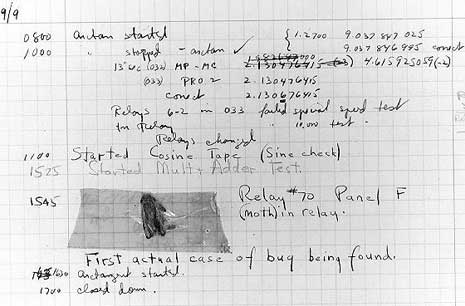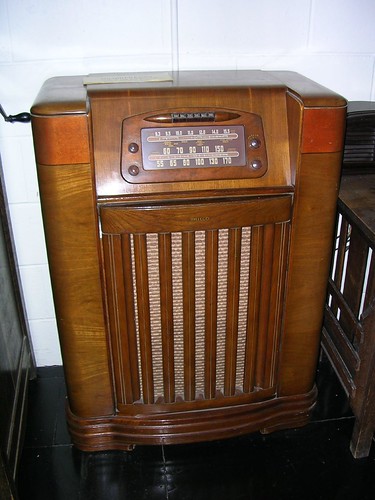History of Feminism
Related: About this forum#DidYouKnow the term “debugging”
as it refers to computer glitches—is attributed to Rear Admiral Dr. Grace Hopper? Hopper was a pioneering computer scientist whose work led to the development of COBOL, one of the earliest programming languages. #WomenInSTEM (Photo: Grace Hopper at the UNIVAC keyboard, 1960. Smithsonian.)

unblock
(54,352 posts)although later versions of the story had it that the actual bug was simply a joke/gift/trophy of sorts given to her by her staff.
4Q2u2
(1,406 posts)She walked around with a wire the length of a Nano-second to show people how fast light was.
USS Hopper DDG-70 Named for her.
SeattleVet
(5,621 posts)Met her twice when I was working as a systems manager in NYC in the mid-80's. She was still handing out her nanosecond lengths of wire. She had these made as an illustration of exactly why various types of satellite communications took the amount of time they did when she was explaining it to politicians and non-technically inclined upper-level officers.
She also had them make a 'microsecond' piece of wire. The microsecond coil of wire about 984 feet long, which was used it as an illustration of how much was being wasted when a programer said something like, 'It only takes a microsecond longer this way'.
I also have a package of 'picoseconds' that she handed out when she was working for Digital Equipment Corporation in the last few years of her life...it's a packet of ground pepper with the DEC logo on it.
Here's Adm. Hopper explaining nanoseconds:
The original 'bug' was a moth that had gotten into the system and was blocking the reading-holes in the paper tape reader. It was removed and taped into the system log as the 'bug' that was causing the intermittent problems they were seeing. This artifact is, I believe, available at the Smithsonian.

progressoid
(50,879 posts)ismnotwasm
(42,495 posts)freshwest
(53,661 posts)Last edited Tue Jun 24, 2014, 04:48 PM - Edit history (1)
Regarding the communications she is explaining, here is a video that discusses time, GPS and satellites:
When I was going for my FCC radio license, we learned about crystal recievers which were replaced by vacuum tubes. It was a brief history part of the course, before we went into the digital part.
It was suggested that moths got into the old vacuum tube radio sets. I do know from experiene that bugs love the heat older electronics generated.
I had an old style cabinet radio and 78 RPM phonograph player (to play those old slate records) given to me by my father. It had tubes and the dial was backlit, perfect for summer nights as teen in my bedroom. It looked very much like this picture:

It was built in the thirties with a square antenna enclosed within it. I had to reach behind it to turn it for reception and was able to listen to programs from Europe and Latin America late at night in the sixties.
But the operation of the original crystal sets always fascinated me. I don't know if there are really any of them around or if they'd be able to pick up anything with the changes in transmitters. Later I had one of the wooden box style radio inwhich I could see the crystals, and they were not artificial ones.
Anyway, your description reminded me of all of that. Although I hadn't thought about it in years and my memory may be off a bit. No one seems to know about this anymore.
Warren Stupidity
(48,181 posts)when I started out many years ago as a software engineer.
SeattleVet
(5,621 posts)Very 'no-nonsense' type of delivery.
Here she is on Letterman in the 80's (the era and her age):
IronLionZion
(47,315 posts)Grace Hopper was a very important pioneer for developing the COBOL language as well as research in things like distributed computing and standardized testing for code written in the earlier languages.
This is one of the coolest things about her:
"The most important thing I've accomplished, other than building the compiler, is training young people. They come to me, you know, and say, "Do you think we can do this?" I say, "Try it." And I back 'em up. They need that. I keep track of them as they get older and I stir 'em up at intervals so they don't forget to take chances."